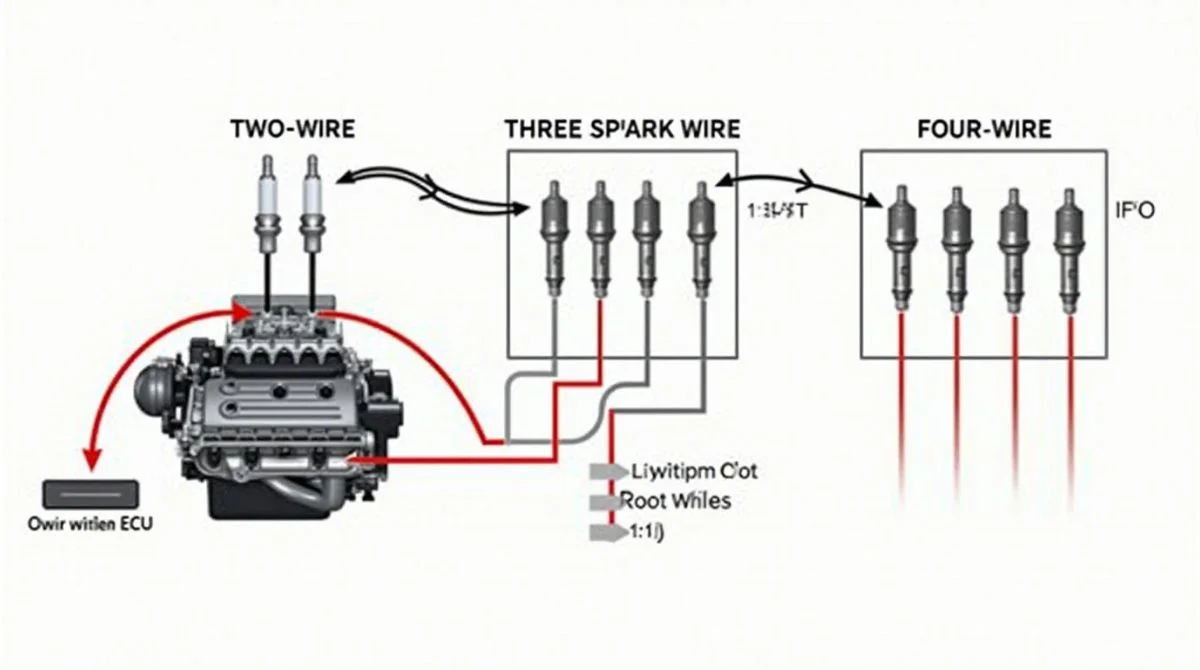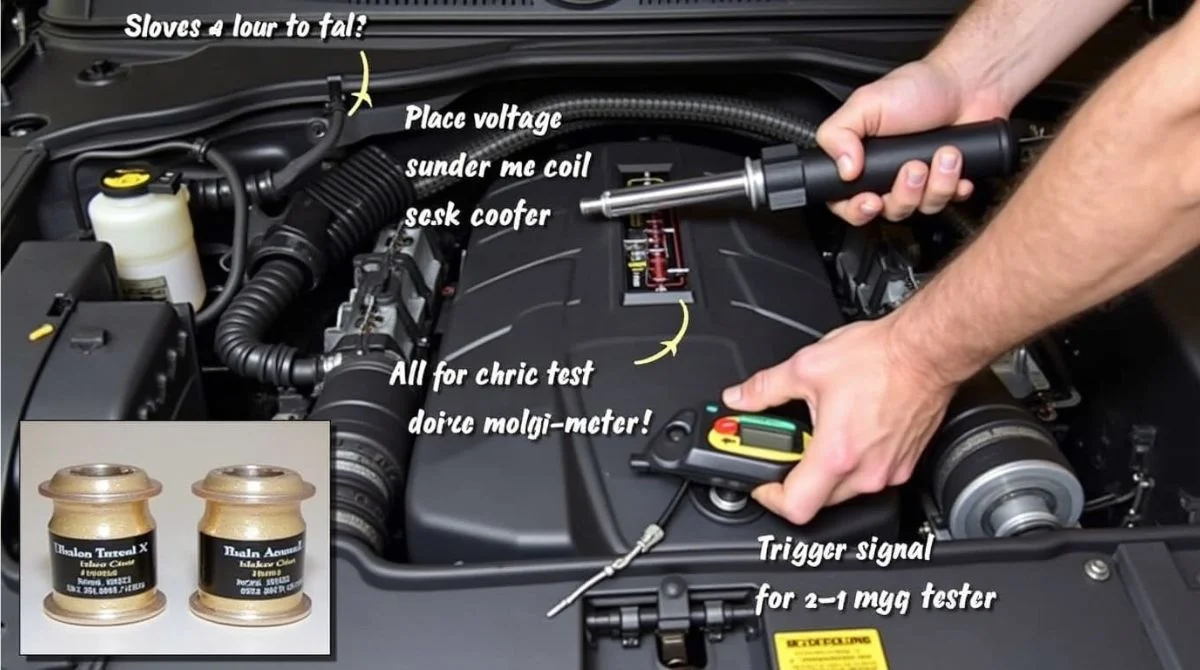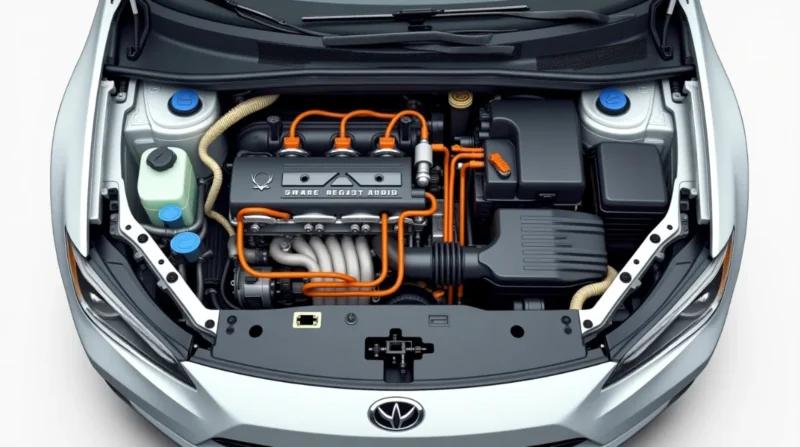Table of Contents
Cop wires, or coil systems, are modern ignition components used in most newer cars. In this system, each spark plug has its own ignition coil placed directly on top of it. This eliminates the need for traditional spark plug wires and helps improve the vehicle’s overall performance and fuel efficiency.
How Cop Wires Work?
In older vehicles, a single ignition coil delivered power to all spark plugs using long wires. In a coil-on-plug system, each spark plug receives its spark directly from its own coil. The car’s computer sends a signal to each coil at just the right moment to create a strong, well-timed spark. This improves combustion and ensures the engine runs smoothly.
Since each coil is placed right on top of the spark plug, there’s very little energy loss, and the system is less likely to suffer from problems like misfires or weak spark.
Types of Cop Coil Wiring
Cop systems can be set up in three main wiring styles.
- Two-wire coils: These have a power wire and a signal wire. They are usually found in older models and depend on the car’s computer to control spark timing.
- Three-wire coils: These add a separate ground wire. They are more stable and easier to test.
- Four-wire coils: These include power, ground, trigger, and a feedback wire that reports back to the computer if the spark actually occurred.

Advantages of Cop Wires
Cop wires offer many benefits over traditional ignition systems.
- Stronger spark: Each coil creates its own spark, resulting in better ignition performance.
- Fewer parts: No more distributor cap, rotor, or spark plug wires to wear out.
- Improved fuel economy: The engine runs more efficiently because of accurate spark timing.
- Better emissions control: Complete combustion means cleaner exhaust gases.
- Easy diagnostics: Problems are easier to isolate since each coil serves just one cylinder.
Why Cop Coils Fail?
Even though cop systems are reliable, they can still develop problems over time. Here are the common causes of failure.
- Heat damage: High temperatures under the hood can cause the coil’s internal parts to break down.
- Moisture and oil: Water or oil can leak into the spark plug well and damage the coil.
- Worn spark plugs: A worn plug can increase resistance and overwork the coil, leading to failure.
- Improper handling: Dropping or twisting coils can crack their housing or cause internal faults.
Signs of a Faulty Cop Coil
Watch for these symptoms if you suspect a coil problem.
- Engine misfire.
- Rough idle.
- Poor acceleration.
- Check engine light with codes like P0301–P0306 or P0351–P0356.
- Reduced fuel efficiency.
How to Test Cop Wires?
You can test cop packs using basic tools.
- Use a spark tester: Place it under the coil boot and crank the engine. If there’s no spark, the coil may be bad.
- Check for voltage: Use a multimeter to see if 12V is reaching the coil when the key is on.
- Test the ground: Ensure the coil has a solid ground connection.
- Look for trigger signal: For three- or four-wire coils, check that the computer is sending a signal.
- Swap test: Move the suspect coil to another cylinder. If the misfire moves, the coil is likely faulty.

Maintenance Tips for Cop Systems
Keeping your coil-on-plug system healthy is simple.
- Replace spark plugs on schedule: This reduces strain on the coils.
- Use dielectric grease: A small amount on the coil boot prevents moisture and carbon tracking.
- Keep the engine bay clean: Dirt and oil can cause shorts and reduce coil life.
- Handle coils carefully: Don’t pull or twist them too hard.
- Check connectors: Look for loose pins or corrosion on the wiring plugs.
Cop Wires vs. Traditional Plug Wires
| Feature | Cop Wires | Traditional Spark Plug Wires |
| Spark strength | High and direct | Weaker due to wire resistance |
| Parts involved | Coils only | Wires, cap, rotor, distributor |
| Maintenance | Low | Requires periodic wire replacement |
| Cost | Higher per coil | Lower per wire, but more parts |
| Diagnostics | Easier | Harder to isolate problems |
When to Replace Coils?
Replace your cop coils when.
- The coil shows no spark even with good power and ground.
- Swapping coils moves the misfire to a new cylinder.
- A persistent engine code remains after changing the spark plug.
- The coil boot is cracked or carbon-tracked.
- Engine performance doesn’t improve after replacing plugs.
Always use high-quality OEM or certified aftermarket coils to ensure a good fit and long life.
FAQ
Q1. What is the main benefit of cop wires?
They deliver a stronger, more accurate spark, improving engine performance and reliability.
Q2. Can I drive with a bad cop coil?
Yes, but it’s not recommended. It will reduce performance and can damage the catalytic converter.
Q3. Do all cars use a cop ignition?
Most modern cars use it, but some older models still use traditional distributor systems.
Q4. Can I replace one coil at a time?
Yes, if only one coil is bad. But if others are old, it’s smart to replace them as a set.
Q5. How long do cop coils last?
They often last between 100,000 to 150,000 km, but this depends on your car and
Conclusion
Cop wires are one of the best upgrades in modern car ignition systems. They reduce complexity, improve spark delivery, and help engines run smoother and cleaner. With proper care and occasional replacement, they can last a long time and keep your vehicle performing its best. Regular inspection and timely action when symptoms appear can save you from costly engine repairs later. If you ever notice rough idling, hesitation, or a blinking check engine light, don’t ignore it. A quick check or swap of the coils can help you fix the issue and avoid major problems.









